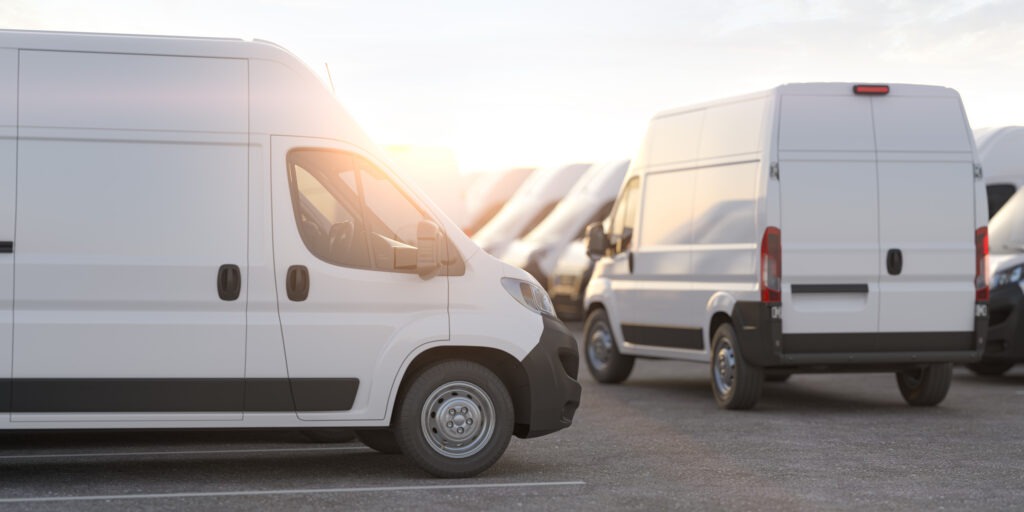France sees new-car registrations fall as hybrids sweep closer to the top
10 February 2025

France saw new-car registrations struggle across 2024. Hopes that this year might prove stronger have been dashed by a weak January result. Autovista24 special content editor Phil Curry explores the market.
The French new-car market started 2025 with a decline in registrations. This result continues a turbulent period for the country’s automotive sector.
The latest data from the country’s automotive industry body, the PFA, shows new-car deliveries declined by 6.2% in January. It is the eighth drop in registrations in nine months, with only December’s modest rise bucking this trend.
A total of 114,673 units were sent to customers in the month. This opens a gap of 7,609 units compared to 2024 according to Autovista24 calculations. Last year, the market started strongly, before a dip in March followed by a run of seven consecutive months of declines from May.
‘As expected, the December increase was only a one-off, due to two additional working days associated with the usual end-of-year effects related to regulatory changes and the achievement of commercial objectives,’ commented Marie-Laure Nivot, head of automotive market analysis at AAA Data.
‘However, it should be remembered that January 2024 was a fairly solid month. In fact, we are back to roughly the volumes of January 2023. At the time, the market was emerging from a period of tensions over supplies and logistics. Today, it is the level of orders that is worrying and suggests a persistent weakness in registrations for the months to come,’ she added.
Hybrid helps new-car market
Once again, the hybrid market propped up the French registration totals. The country splits its full hybrid (HEV) and mild hybrid (MHEV) figures into separate categories. Each sector saw an improvement in January, the only powertrains to do so.
MHEVs soared last month, indicating changing attitudes when it comes to different powertrain offerings. Registrations were up 91% year on year to 24,347 units. This was 11,600 deliveries more than last year.
MHEVs offer slight reductions in CO2 emissions, with the 48-volt system providing some relief when it comes to power delivery. Therefore, carmakers are increasingly adding the technology to their internal-combustion engines (ICEs). This comes at the cost of traditional petrol and diesel engines in their ranges, and registration figures.
MHEV’s market share jumped by 10.8 percentage points (pp). From a 10.4% hold in January 2024, last month saw the technology take 21.2% of all registrations.
Meanwhile, HEV registrations climbed by 28.7% in the month to 27,100 units. This meant 6,037 more HEVs took to the country’s roads, compared to the same period last year. The result gave HEVs a 23.6% market share, up by 6.4pp.
Petrol falls from grace
Both HEVs and MHEVs ended the month very close to petrol’s total. While the traditional fuel type still leads the market, its dominant position has slipped substantially in 12 months.
In January 2025, petrol registrations declined 28.2%, to a total of 29,974 units. This was a drop of 11,754 deliveries, the biggest of any fuel type in the month. Noticeably, this was also close to the total increase for MHEVs, highlighting the range changes.
Petrol’s performance meant it accounted for 26.1% of all total registrations in the country. This was a severe drop from the 34.1% recorded last year.
At the beginning of 2024, there was a sizeable gap between petrol, MHEVs and HEVs. However, this has now narrowed substantially. In terms of share, HEVs were 2.5pp behind petrol in January, having closed the gap from 16.9pp 12 months ago.
At the same point in 2024, MHEVs were 23.7pp behind petrol. In January 2025, mild hybrids had closed this gap to just 4.9pp. Hybrids could overtake petrol as the most dominant powertrain in 2025, in what would be a first for the country.
Meanwhile, diesel’s downfall continued. The fuel type ended January with a drop of 48.5%, with 4,956 units registered. This was a gap of 4,664 units compared to last year. The powertrain took a 4.3% market share, dropping from the 7.9% recorded last year.
Renault boosts BEVs
Battery-electric vehicle (BEV) deliveries were down 0.5%, with January’s 19,923-unit total just 94 lower than last year. This was the sixth consecutive month that BEVs have seen numbers drop year on year.
The rise in hybrid registrations meant the BEV market share was eroded. The technology took 17.4% of total registrations in January, a drop of 1pp.
According to AAA Data, registrations of Tesla models declined significantly, by 63%, in January. Deliveries of Dacia models also fell by 51% in the month. From the beginning of 2024, subsidies were awarded to vehicles with a production carbon footprint below 14.7 tonnes of CO2. This made things more difficult for BEVs made in China.
Meanwhile, Renault saw registrations of BEVs almost double, thanks to the success of the Renault 5. The new model led the BEV market with 2,813 registrations in the month, while the Scenic placed third with 1,177 registrations. Citroën too enjoyed a strong month, with the ë-C3, second in the rankings of best-selling BEVs, thanks to 1,548 registrations.
New-car challenges ahead
Yet, the continued slowdown in BEV registrations is a concern for the market in 2025. New plans for BEV incentives came into effect in December 2024, amending the amount of incentives paid to buyers of new models.
The maximum amount dropped from €7,000 to €4,000 for households whose tax income does not exceed €16,300. For those with a taxable income between €16,300 and €26,200, the aid is now €3,000. Above this taxable income, aid is reduced to €2,000, half of what was offered on the previous subsidy scale.
Additionally, the qualifying requirements counting against BEVs imported from China, mean these vehicles remain expensive. Models delivered before 14 February will benefit from the previous rates, provided they were ordered prior to the changes. Yet the situation could impact the market in the months ahead.
The lack of growth in BEV numbers could also cause concern when it comes to the Corporate Average Fuel Economy (CAFÉ) standard in Europe. This has seen emissions targets for carmakers tightened this year. Without strong growth, some brands could run into trouble by the end of 2025.
PHEVs plummet
Plug-in hybrids (PHEVs) experienced a far more difficult January, recording the largest delivery drop of any powertrain.
The technology saw a decline of 54% in January, with just 4,852 registrations. This was a drop of 5,697 units compared to the same point last year, putting PHEVs behind diesel in terms of both volume and market share.
From an 8.6% hold of all registrations in January 2024, the powertrain held just 4.2% of the market. The technology saw strong growth in December, but January’s performance was the ninth decline in 10 months.
Adding together PHEV and BEV deliveries, the overall plug-in market slumped by 18.9% last month. The grouping saw 24,775 units registered, a loss of 5,791 units year on year. EVs represented 21.6% of all deliveries in January, a drop of 3.4pp.
Combining HEV volumes with the plug-in total, the electrified market managed marginal growth. Thanks to the higher volume and growth of HEVs, electrified registrations improved by 0.5%, with 51,875 deliveries.
The powertrain grouping made up 45.2% of all registrations, up 3pp year on year. Electrified deliveries sat 14.7pp ahead of the 30.5% ICE market share, made up of pure petrol and diesel powertrains.
The ‘others’ category, including fuel-cell electric vehicles, natural gas vehicles, LPG, E85/ethanol, and other fuels, dropped 46.3% in January. The powertrain grouping recorded 3,521 registrations, a loss of 3,037 units year on year. It accounted for 3.1% of overall registrations, down by 2.3pp compared to 12 months ago.




